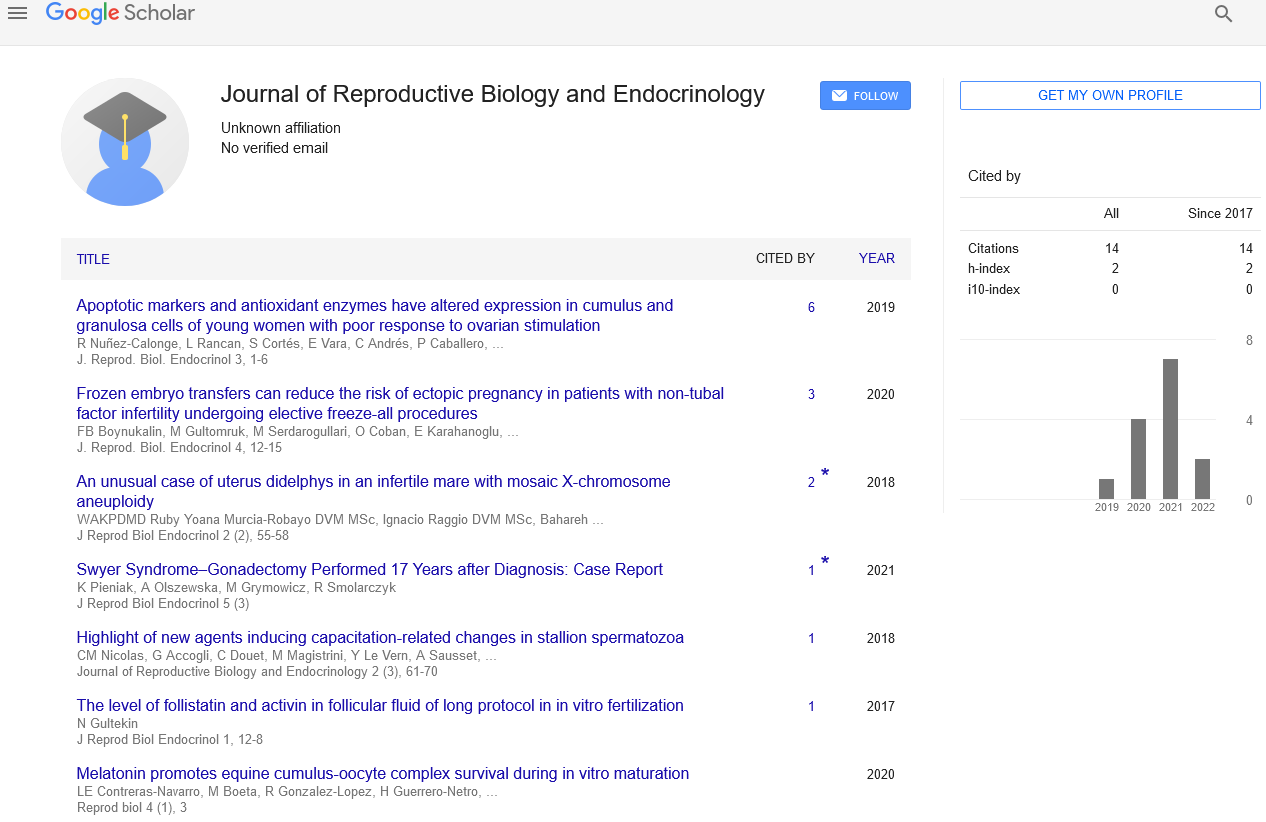Hormonal controlling of spermatogenesis
Received: 08-Aug-2020 Accepted Date: Aug 20, 2020; Published: 31-Aug-2020
Citation: Gunapalli N. Hormonal controlling of spermatogenesis. J Reprod Biol Endocrinol. 2020; 4(3):7.
This open-access article is distributed under the terms of the Creative Commons Attribution Non-Commercial License (CC BY-NC) (http://creativecommons.org/licenses/by-nc/4.0/), which permits reuse, distribution and reproduction of the article, provided that the original work is properly cited and the reuse is restricted to noncommercial purposes. For commercial reuse, contact reprints@pulsus.com
Introduction
Development, upkeep and working of Secondary sexual organs epididymis, vasa deferentia, penis and frill organs prostate, fundamental vesicle, cowper's organs are heavily influenced by male hormones testosterone discharged by leydig cells of testicles. Likewise, development, support and working of soporific tubule and leydig cell are controlled by follicle animating hormones of foremost pituitary. Luteinizing hormone (LH) and follicle-invigorating hormone (FSH) causes the testicles to deliver testosterone and sperm. The pituitary organ, sited in the cerebrum, makes these hormones.
Steroid Function
Testosterone and its metabolites, dihydrotestosterone and estradiol , are by and large alluded to as the sex hormones. This is a direct result of their essential job in the guideline of gonadal and germ cell improvement in the two guys and females just as in the sexual separation of guys. In the male, T expect the lead job in both morphological turn of events and conceptive capacity, despite the fact that E2 and its receptor estrogen receptor (ER) α , however not ERβ , unmistakably assume some job in the upkeep of male fruitfulness. Notwithstanding, these impacts seem, by all accounts, to be backhanded and auxiliary. Disturbance of Er β has no obvious impact in guys, as XY creatures are morphologically ordinary and prolific. In the human regenerative cycle, two sorts of sex cells, or gametes (GAH-meetz), are included. The male gamete, or sperm, and the female gamete, the egg or ovum, meet in the female's conceptive framework. At the point when sperm treats (meets) an egg, this prepared egg is known as a zygote (ZYE-goat). Beginning perceptions of Er α invalid male mice recommended an essential job for this quality in managing spermatogenesis, as creatures gave diminished fruitfulness and significantly diminished epididymal sperm tallies. Nonetheless, it is currently evident that the essential capacity of ERα in the male conceptive lot is the guideline of luminal liquid reabsorption in the rete testis and efferent conduits connecting the testis and epididymis. As may be normal, guys homozygous for transformations in both Er α and β have a comparative phenotype to guys.
While androgens impact separating germ cells, there is a well‐established negative impact of androgens on the separation of spermatogonial foundational microorganisms. This perception originates from work planned for understanding the delayed concealment of spermatogenesis in men following radiation or chemotherapy therapy for disease. Following treatment, spermatogonia are available, yet neglect to multiply or separate. It was discovered that in lighted rodents, incitement of spermatogenesis happened following treatment with GnRH agonist or T, which both act to stifle intratesticular T fixation. This work was later stretched out to show that a GnRH adversary animates spermatogonial multiplication and hinders apoptosis following illumination. Likewise, late examinations have indicated that this impact is a direct result of hindrance of androgen work, as the androgen enemy flutamide invigorates, while testosterone restrains, spermatogonial multiplication and separation. A comparable impact has been shown in adolescent spermatogonial exhaustion (jsd ) mice, whose germ cells relapse to a spermatogonia‐only phenotype following the primary rush of spermatogenesis. Incitement of spermatogonial expansion and separation, alongside fruition of spermatogenesis, is seen in the testicles of these creatures following treatment with GnRH opponent or flutamide. The stimulatory activity of GnRH foe is forestalled by co‐administration of T, while flutamide turns around the abusive impact of testosterone.





